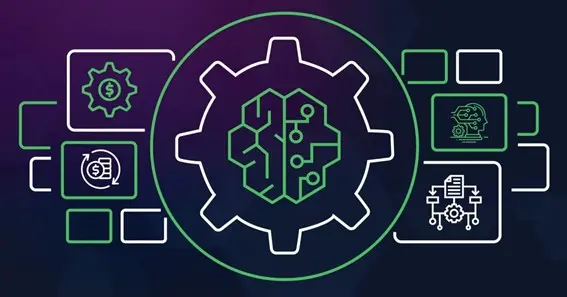Organisations may now utilise machine learning to make choices based on data and gain a competitive edge. AWS SageMaker is a powerful tool that allows programmers and data scientists to create, train, and implement machine learning models on a large scale within Amazon Web Services (AWS). With an emphasis on the importance of gaining an AWS Certification and how it may lead to new AWS Projects, this blog will cover how to use AWS SageMaker to develop machine learning models.
What are AWS SageMaker?
Amazon SageMaker, a fully managed service, makes the entire machine-learning workflow easier. It provides a centralised platform for model development, deployment, and information gathering. SageMaker users can add their original code, use pre-trained models, or select from a variety of built-in algorithms. The platform is a great choice for specialists and machine learning amateurs since it handles automatic scaling, resource optimisation, and model performance monitoring.
Also Read N: Are Labs Good With Cats: Understanding Their Compatibility
The Importance of AWS Certification
Having an AWS Certification is highly valuable in the tech industry, with employers across the globe actively seeking candidates who have obtained this certification. As AWS remains at the forefront of the cloud computing industry, having this certification can significantly improve one’s career prospects. The certification certifies a person’s skill with AWS services and dedication to staying current on new advances in cloud computing. An AWS Certification significantly boosts career possibilities and salary potential, giving you a competitive edge.
Also Read P: 13.50 An Hour Is How Much A Year: Understanding Your Annual Income
AWS SageMaker for Machine Learning
Numerous tools and resources are available with AWS SageMaker to speed up the machine learning procedure. The main SageMaker elements and their functions are listed below:
- Before training a machine learning model, it is important to preprocess the data to clean it up and convert it into a usable format. SageMaker has built-in functions for data preparation, enabling users to effectively manage missing values, normalise data, and carry out feature engineering.
- Model training is made simple by the scalable architecture of SageMaker. Users have a broad selection of algorithms, such as XGBoost, TensorFlow, and PyTorch, for deep learning. The SageMaker dashboard or APIs make organising and managing training jobs simple.
- Model performance is greatly improved by tweaking the hyperparameters. Users may automatically search for and locate the optimal collection of hyperparameters using SageMaker’s built-in hyperparameter tweaking capabilities, maximising model accuracy while minimising resource use.
- The model has to be deployed for inference on real-world data after it has been trained and optimised. By offering managed endpoints that can be quickly scaled up or down, dependent on the demand of the application, AWS SageMaker makes model deployment simpler.
- For monitoring model performance and spotting possible problems, SageMaker provides logging and real-time monitoring features. Using SageMaker Debugger and Amazon CloudWatch, developers can ensure their models operate at peak efficiency.
AWS Projects and SageMaker Applications
Aspiring AWS-certified professionals may work on fascinating and cutting-edge projects using their AWS SageMaker knowledge. The following AWS projects can make use of SageMaker’s features:
- Healthcare diagnostics might be revolutionised using an image classification model with SageMaker to find illnesses or abnormalities in medical photos. Such initiatives can increase the precision and speed of diagnosis because of massive datasets and SageMaker’s deep learning capabilities.
- With the help of AWS SageMaker, programmers may build complex chatbots, sentiment analysis tools, and language translation services since it supports well-known NLP frameworks like BERT and GPT.
- In e-commerce and content platforms, recommender systems are essential. Developers may create personalised recommendation engines that improve user experience and increase engagement by utilising SageMaker.
- Data scientists may use SageMaker to create predictive maintenance models that assist manufacturers in identifying probable equipment problems before they happen, optimising maintenance schedules, and minimising downtime.
- Financial organisations may use the machine learning algorithms of SageMaker to spot fraudulent transactions and shield their clients from any security lapses.
Key Features of AWS SageMaker
Here are some key features of AWS SageMaker:
- Data exploration, model testing, and code development can all be done in a comfortable and engaging environment with the help of managed Jupyter notebooks from SageMaker. These notebooks enable users to easily work with team members, develop and run code, and visualise data.
- Regression, classification, clustering, and dimensionality reduction are just a few machine-learning tasks the platform’s built-in algorithms can handle. The built-in algorithms enable effective training and inference since they are designed to operate on distributed infrastructure.
- Although SageMaker has a wide range of built-in algorithms, programmers also have the freedom to integrate their machine learning code in well-liked frameworks like TensorFlow, PyTorch, and MXNet. This enables the usage of domain-specific models and further customisation.
- Hyperparameter adjustment, a crucial step in improving model performance, is automated by SageMaker. Users may provide hyperparameter ranges, and SageMaker will execute several training jobs automatically with various hyperparameter settings to discover the model that performs the best.
- SageMaker enables users to handle huge datasets and complicated models effectively by allowing training jobs to scale easily across numerous instances. The platform automatically manages the distribution of data and adjusts model parameters to optimise the use of resources.SageMaker simplifies deployment after a model is trained and prepared for inference. To offer predictions at scale, customers can construct real-time endpoints or batch convert processes. These endpoints are simple to combine with other AWS services and programs.
- Using Amazon CloudWatch, SageMaker makes it possible to monitor deployed models in real time and gain knowledge on their resource and performance usage. It also enables auto-scaling, which allows the number of instances handling inference requests to be changed following the demand of the application.
- SageMaker protects data by encrypting it while it is in use and at rest. Users may safely regulate access to their resources using the platform’s fine-grained access control feature.
Conclusion
Developers and data scientists may easily construct machine learning models using the robust AWS SageMaker platform. An AWS Certification is a terrific way for aspiring professionals to demonstrate their proficiency with AWS services and open doors to intriguing projects across various sectors. SageMaker’s strengths make it a great tool for tackling real-world problems and fostering innovation in various industries, including healthcare and finance. Therefore, begin your path to AWS Certification, unlock AWS SageMaker’s ability to change the world with cutting-edge machine learning applications, and explore the potential of incorporating QR codes for enhanced data integration. You can even use a banner to customize your website or profile.






